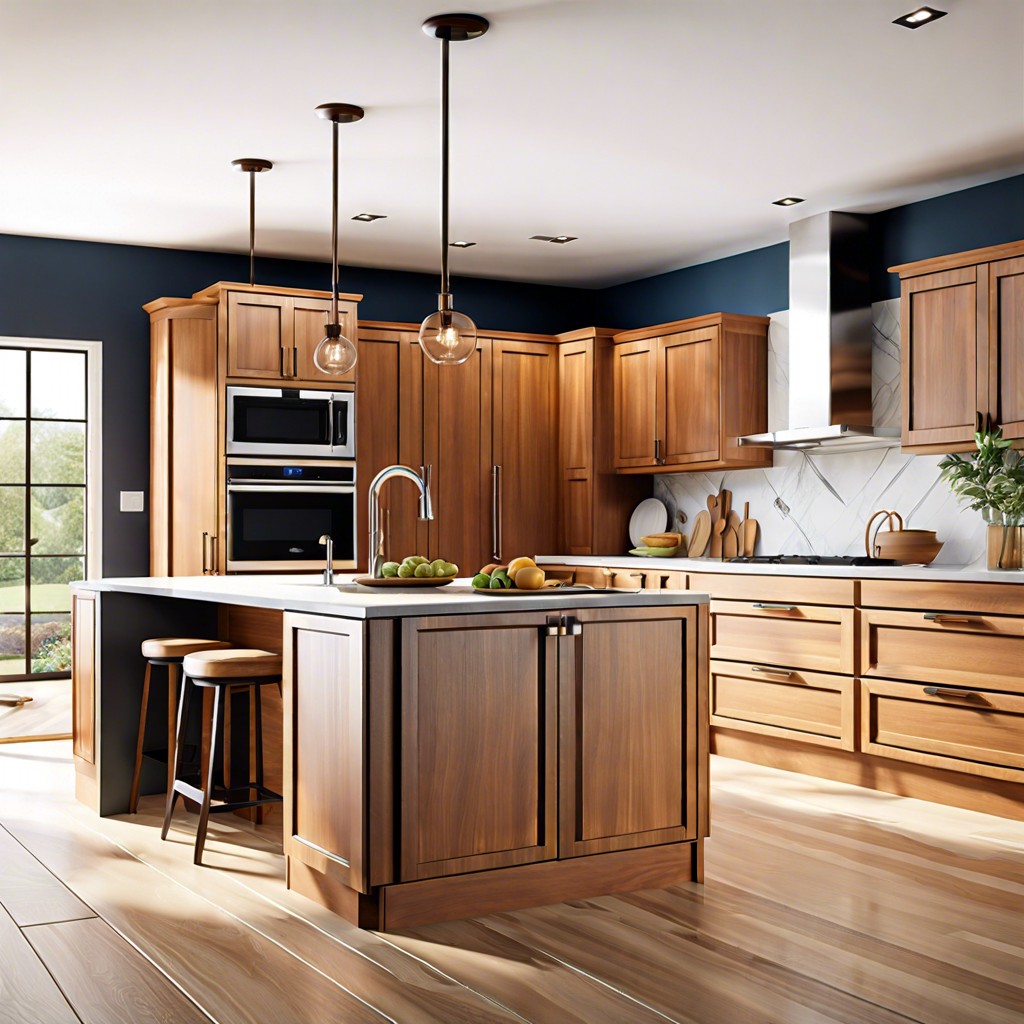Last updated on
Discover practical tips for buying wholesale cabinets and learn how to select the best options for your needs without breaking the bank.
Key takeaways:
- Cabinets can be purchased wholesale directly from manufacturers or distributors.
- Consider the material quality and construction when buying wholesale cabinets.
- Look for cabinets with full-extension drawers, soft-close hinges, and adjustable shelves.
- Wholesale cabinets offer cost savings and discounted rates for bulk purchases.
- Choose reputable suppliers based on track record, certifications, and customer recommendations.
What's Inside
How to Differentiate Between High-quality and Low-quality Wholesale Cabinets

Inspecting the craftsmanship is a key indicator. High-quality cabinets will have solid frames, doors, and drawer fronts. Look for dovetail joinery in drawers instead of staples or glue, which signifies durability.
Materials used also tell a story. Premium cabinets often feature real wood or high-grade plywood construction, whereas lower quality ones might use particleboard or medium-density fiberboard (MDF) with a veneer.
Check the cabinet’s finish. A uniform and smooth finish without bubbles or imperfections can often be a sign of meticulous attention to details.
Hardware matters. Soft-close hinges and drawer slides are features of top-notch cabinets. They not only add to the functionality but also enhance longevity by preventing slamming.
Finally, the warranty offered can be a telltale sign of the manufacturer’s confidence in their product. A longer, more comprehensive warranty is typically associated with higher quality cabinets.
The Economic Benefits of Purchasing Cabinets Wholesale Versus Retail
Opting for wholesale cabinets directly translates into cost savings, chiefly due to the elimination of middlemen. Retailers typically mark up prices to cover overhead expenses like storefront operations, staffing, and display setups. In contrast, wholesalers often function with streamlined operations focused on bulk sales, passing on the savings to you.
Consider the value of bulk purchases. Purchasing large quantities at once, as is common in wholesale transactions, often results in discounted rates. This is particularly advantageous for contractors handling multiple projects or homeowners tackling extensive remodels.
Negotiating power is another economic upside. Individual buyers have limited leverage with retail prices, which are relatively fixed. Wholesalers, on the other hand, may offer flexible pricing based on volume, loyalty, or even payment terms.
Lastly, factor in the time savings. Wholesale purchases tend to be straightforward, reducing the time invested in the selection and buying process. This efficiency is not only convenient but can also reduce the indirect costs associated with prolonged project timelines.
Tips for Finding Reliable Wholesale Cabinet Suppliers
Navigating the sea of suppliers can be daunting; however, there are a few key indicators to guide you in choosing a reputable provider. Start by checking their track record. Long-standing businesses often have accumulated customer reviews and testimonials, which can shed some light on their reliability.
Another indispensable tool is seeking certifications and professional affiliations. Trusted suppliers usually align with industry standards and may be part of associations which advocate for integrity and quality.
Don’t hesitate to ask for samples. A credible wholesaler will be confident in their product and willing to provide samples for your assessment. This gives you a tactile sense of the cabinet quality and finish you can expect in a full order.
Tap into your professional network. Other businesses or contractors are a goldmine of information, and their recommendations can lead you to proven suppliers.
Lastly, effective communication speaks volumes. A supplier that is prompt, transparent, and attentive to your inquiries indicates strong customer service — a trait that’s as important as the quality of their cabinets. When a supplier checks these boxes, you can feel confident in forging a successful partnership.
Understanding the Various Materials and Construction Methods Used in Wholesale Cabinets
Diving straight into the nitty-gritty of materials and construction, you’ll find that cabinets primarily come in wood, plywood, MDF (Medium Density Fiberboard), particleboard, and sometimes metal or thermofoil. Solid wood, known for its durability and classic look, stands up to wear and tear but commands a higher price. Plywood offers a more affordable yet sturdy alternative, making it a common choice for those looking for a blend of quality and value.
MDF, on the other hand, provides a smooth, uniform surface ideal for painted finishes. It’s also less susceptible to the expansion and contraction you might experience with solid wood, due to temperature and humidity changes. Particleboard, the most cost-effective option, is lighter in weight and can be quite sturdy when covered with laminate or veneer. However, it doesn’t hold fasteners as well as its counterparts.
Metal cabinets inject a modern, industrial look and boast great strength and durability—perfect for contemporary spaces or commercial environments.
In terms of construction, the techniques used can greatly affect durability and price. Cabinets may feature dovetail, mortise-and-tenon, or butt joint construction. Dovetail joints are strong and resist pulling apart, indicative of superior craftsmanship. Mortise-and-tenon, an ancient method, also speaks volumes of durability and quality. Butt joints, while simpler and more economical, can be reinforced with screws or staples to add strength.
Cabinetry can also come ready-to-assemble (RTA), pre-assembled, or fully custom. RTA cabinets are more cost-efficient and shipping-friendly, while pre-assembled ones save you assembly time. Fully custom options provide a tailored fit and unique design, reflecting the higher price point.




